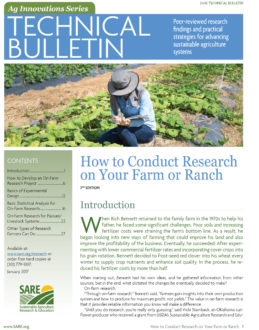Although most on-farm research deals with data that follows a roughly normal distribution, some types of field data are not normally distributed. For example, the distribution of agricultural pest populations in an orchard may not be spread uniformly across the field but rather occur in clumps, due to any number of influences. Other data that cannot be described by a normal distribution includes ranking data collected through surveys that assess a population’s opinions or preferences.
Statistical methods that deal with this kind of data are called non-parametric statistics. Since non-parametric methods are less dependent on how the data is distributed, they can have broader applicability. Also, non-parametric tests are often simpler than corresponding parametric statistics and can be applied when less is known about the population (data) in question. Despite these advantages, knowing which parametric tests to use, and under what circumstances, requires knowledge and expertise. See the profile of farmer Clarissa Mathews, who collected data on the effectiveness of trap crops and pheromone traps to control brown marmorated stink bugs in vegetable plots. After collecting her data, she checked it for a normal distribution before determining which method of statistical analysis to use. Check with your cooperating researcher or Extension agent for information and assistance.
